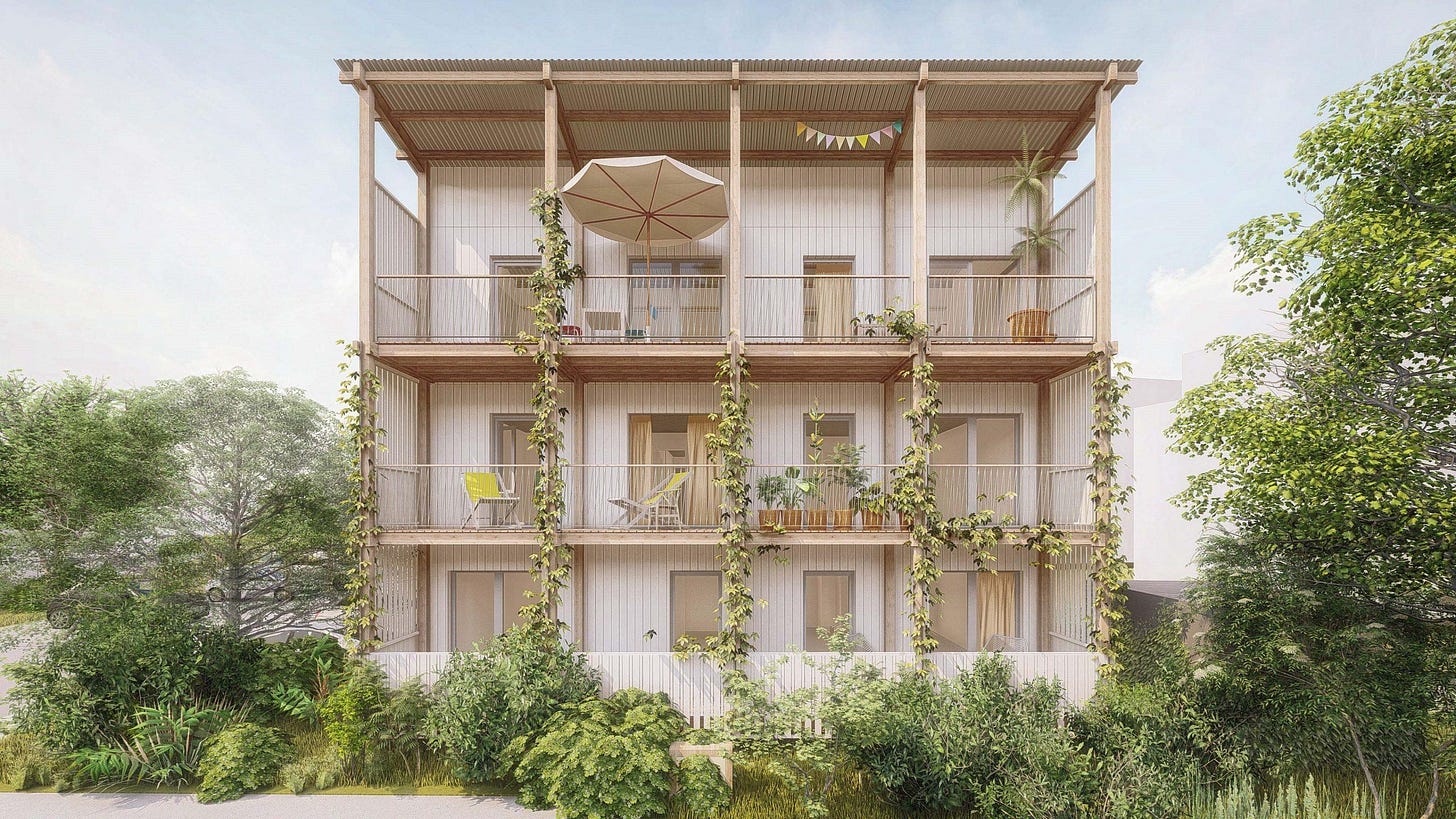'The low-carbon construction is accelerated by the current economic and regulatory context'
Welcome back, readers! In 2022, we asked people of the impact ecosystem to talk about their work and projects to help save a planet at stake. Fascinating personalities accepted our request, from Paul Duan to Alice Legrix de la Salle. Let’s start 2023 with a conversation alongside Sylvain Bogeat, co-founder at Vestack, one of our portfolio companies that joined in 2022. What is the mission of Vestack? How can we define low-carbon construction? How can the traditional ecosystem support Vestack’s mission? We will answer these questions and hope you will stick to this burning topic. Happy new year!
What is low-carbon construction? What are the benefits?
Eco-design conception and carbon-neutral materials are the fundamentals of low-carbon construction. For years, concrete has been predominantly used in the industry, representing 8% of global carbon emissions. Using sustainable materials is the first area of improvement to reduce construction's CO2 footprint. However, 40% of the emissions linked to a building are caused by its exploitation. It is thus fundamental to also consider the energetic performances of the building once the construction is over. Many solutions are regarded by Vestack as providing better insulation to achieve passivity.
The digitalization and industrialization of our processes also enable us to reduce our CO2 emissions giving us data to overlook every aspect of production. This takes form during the cutting phase for example where the scrap rate is optimized to reduce waste. Further upstream, the BIM (Building Information Modelling) provides more transparency and data to think about the sustainability of the building (LCA, material choices). Architects can then, directly on our Revit plug-in, make the necessary decisions to improve building sustainability and energy efficiency. Moreover, we source wood from European providers to limit carbon emissions from the transport. Building off-site also preserves the worksite environment from direct pollution and nuisance.
In terms of impact, Vestack is quite holistic: besides all the environmental benefits, by limiting additional costs of low-carbon construction, we also bring a solution to the urgent need for affordable housing. In France, there is an annual need of 400 000 new housing to answer the national housing crisis and they must be affordable. Indeed, for the first decile of people living in private housing, accommodation represents 40% of their income.
Sylvain, can you remind us how the Vestack adventure started?
I have always been passionate about the issues of smart cities, urbanism, and real estate leading me to discover the concept of industrialized construction which inspired the creation of Vestack. My two associates Nicolas Guinebretiere and Jean-Christophe Pierron have respectively strong experiences in infrastructure and industry which led them to the same conclusion: the construction industry needs a revolution.
From these different experiences, we started sharing a common ambition: offer a sustainable building solution without increasing the prices compared to traditional construction. At the same time, the regulatory context played in our favor by imposing real estate promoters to build in a more considerate way towards the environment. A new regulation, the RE2020, was soon born, increasing constraints for the construction industry. It was the perfect timing to launch Vestack!
We offer to absorb costs associated with low-carbon construction considering two angles: industrialized construction and digitized process. From residential buildings to nurseries, we design and build from scratch turnkey products with a carbon footprint divided by 3 and 0 additional cost compared to our traditional concrete competitors. Our design for manufacturing software communicates and optimizes instructions for our production sites enabling us to build in a few days a wooden framed module at 90% finished off-site.
How can we ensure that low-carbon construction also responds to social issues, preservation of biodiversity, non-artificialization of land, etc.?
To begin with, Vestack decided to lead by example: we implemented our production sites in disused factories. On the projects side, we can have control over which projects we choose to undertake and with which clients we want to work with, but the real choice regarding the land plot happens upstream of our activities.
The historical players in the construction industry are now also positioning themselves on the subject of low-carbon construction. What are the differentiating element and the innovation that Vestack brings compared to these players?
Vestack provides a balance between industrialization and product flexibility: we provide a half-tailored service. Indeed, customers can choose from a wide variety of facade elements, module sizes and shapes, and finishes while we industrialize their choices. By using Building Information Modelling (BIM), we can combine the design, analysis, and manufacturing phases around a single digital twin, which reduces costs, increases efficiency, and provides data to improve future projects. Finally, we integrate all of the value chain aspects from the design to the delivery of the building which differentiates Vestack from the other players in the ecosystem.
What role do local authorities play? Given the current economic context, how is low-carbon construction doing?
The government plays a decisive role in making the construction industry more sustainable. While this industry accounts for 25% of global CO2 emissions, it represents a high point of focus for governments at national and European levels. For example, the RE2020 imposes very strict rules for the construction of new buildings in France, and the EU’s “Fit for 55” pack of rules enlarges the carbon market to the construction sector to constrain CO2 emissions. As for local authorities, they manage urban planning and building permit approvals, which are key features to accelerate the transition towards low-carbon projects in a region.
The economic and regulatory context necessarily impacts our activities in a very positive way. The soaring costs of certain energy-intensive construction materials, such as steel and concrete, are driving developers to seek other solutions that will be more cost-efficient.
With its housing shortage, France needs 400,000 new homes per year in the coming years. We have great projects in sight and quite a mission.





